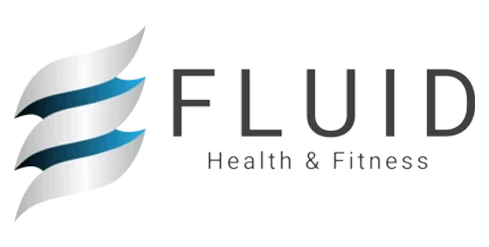Introduction
Week 12 marks the final chapter of Fluid Health and Fitness’s Applied Fundamentals program—a 12-week structured progression through the biomechanical planes of motion. This concluding week examined the final components of the transverse plane in swing mechanics, specifically focusing on the scapulothoracic/glenohumeral complex, lumbopelvic sacroiliac (LPSI) region, and ankle-foot structures. More significantly, it served as a culmination of the cognitive and physical principles introduced throughout the series.
This course has not merely been about movement but about understanding and mastering movement quality—solidifying Fluid’s philosophy: structure before conditioning, movement quality before intensity.
Why It Matters
Week 12 reinforces the principles of controlled rotation in swing-phase mechanics while recapping the foundational components of all three planes—sagittal, frontal, and transverse. The final goal is to ensure that participants not only move well but also understand why each movement matters.
Weekly Breakdown: Transverse Swing Refinement
|
Day |
Focus Area |
Objective |
|
Day 1 |
Scapulothoracic & Glenohumeral |
Stabilize shoulder mechanics during arm swing and trunk rotation. |
|
Day 2 |
Lumbopelvic & Sacroiliac |
Manage pelvic torsion and lumbar rotation during gait and dynamic tasks. |
|
Day 3 |
Ankle & Foot Complex |
Control foot placement, tibial rotation, and swing clearance. |
Key Themes from Week 12
- Upper Body Rotation and Counterbalance
- Scapular retraction/protraction provides dynamic counterbalance to trunk movement.
- Glenohumeral IR/ER enables arm swing without compromising postural alignment.
- Coordination with thoracic rotation is essential to prevent overuse of the lumbar spine.
- Pelvic and Core Control
- Pelvic rotation harmonizes with thoracic swing to reduce lumbar strain.
- SI joint stability is supported by the multifidus, transverse abdominis, and gluteal activation.
- Proper rotation prevents overloading compensatory areas such as the hip flexors or lumbar spine.
- Foot and Ankle Rotation Management
- Tibial internal/external rotation synchronizes with hip and knee alignment.
- Subtalar joint transitions between pronation and supination support limb clearance and postural control.
- Forefoot mobility maintains transverse arch integrity and efficient gait mechanics.
Series Summary: 12 Weeks of Biomechanical Mastery
|
Plane |
Weeks |
Focus |
Core Lessons |
|
Sagittal |
1–2 |
Stance |
Vertical alignment, spinal curves, pelvic and shoulder posture |
|
Sagittal |
3-4 |
Swing |
Trunk extension/flexion, arm and leg trajectory control |
|
Frontal |
5–6 |
Stance |
Lateral shifts, pelvic leveling, scapular and arch symmetry |
|
Frontal |
7–8 |
Swing |
Side-to-side load transfer, foot control during limb return |
|
Transverse |
9–10 |
Stance |
Rotational stabilization of head, trunk, and lower body |
|
Transverse |
11–12 |
Swing |
Dynamic counter-rotation, upper/lower limb timing |
Cognitive and Assimilative Goals of the Series
By the end of this 12-week course, you should be able to:
- Define and visually recognize key biomechanical positions and joint alignments.
- Explain the functional purpose of each joint and muscle group in all three planes.
- Identify dysfunctional movement patterns and potential compensations.
- Perform standardized corrective strategies based on movement plane and joint system.
- Integrate movement quality into daily and athletic function.
Overarching Concepts Reinforced
- Segmental Alignment and Integrity
- Every joint system—from cervical to metatarsals—has a defined neutral, optimized for force transfer and injury prevention.
- Kinetic Chain Interdependence
- Dysfunction in one joint (e.g., foot pronation) can cascade through knees, hips, and spine.
- Plane-Specific Movement Control
- Sagittal = posture and propulsion
- Frontal = balance and weight shift
- Transverse = rotation and load transfer
- Corrective Exercise Hierarchy
- Mobility → Stability → Integration → Load progression
- Proprioceptive and Neuromuscular Awareness
- Mind-muscle connection developed through feedback, cueing, and repetition.
Capstone Application: Self-Assessment and Progression
Participants are encouraged to:
- Use mirrors, videos, and partner feedback to screen alignment.
- Perform fundamental movement screens weekly.
- Incorporate drills from each phase (mobility, control, strength, integration).
- Progress movements from isolated to dynamic, multi-planar tasks.
- Reflect regularly: What movement patterns have changed? What still needs attention?
Conclusion
This 12-week biomechanics series has laid the foundation for intelligent, sustainable movement. It provided not just workouts, but an education in how your body should move, adapt, and perform under real-world conditions. Through systematic exploration of all movement planes and joint systems, you’ve built a foundation for lasting performance and injury resilience.
The path forward isn’t about doing more—it’s about moving better.
Real progress lies in subtle, precise improvements repeated with intention.
Move intentionally. Move structurally. Move for life.



